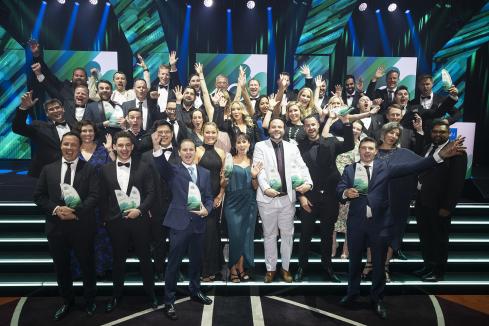

The challenge facing any organisation seeking to develop a truly customer-centric culture is how to get past paying lip service to an ideal and build a focus on customers into the organisational DNA.
In the first part of this series we looked at four aspects of how successful organisations begin the process of placing the customer at the centre of everything they do and avoid the trap of “customer-centricity” becoming a meaningless mantra.
In part two we look at how early success in building customer-centric organisations must be shared broadly; why everything must start with solid evidence for the actions that follow; the pitfalls of believing data can solve every problem; the importance of the right people, process and platforms; and how an organisation actually behaves when it has become truly client-centric.
Nine aspects of true customer-centricity
1. The mandate
2. Thinking big, starting small
3. Holding out for a hero
4. The penny drops
5. Shared success
6. Culture (and evidence) eats strategy for breakfast
7. Data doesn’t solve people problems
8. People, process and platforms
9. Day-to-day decisions
Shared success
Building ranks of true believers in placing the customer first requires people across the organisation to be resourced to deliver and empowered to contribute. It cannot be just imposed from the top down, nor through process documents or buying a new technology platform. It’s meaningless unless people buy in, believe it will work and can see how it will make their job better, and, of course, improve the outcomes for their customers.
When you start to see wins happening, it’s important to share that success across the organisation. It is not just the marketing or customer insights team that should get the pat on the back or see the difference it’s making; the customer-facing staff and all levels of an organisation should be included. Knowing you are making a difference in people’s lives makes anybody’s job fundamentally more meaningful. You strive to do that not because your boss told you to but because it makes your job more worthwhile.
Culture (and evidence) eats strategy for breakfast
Some approach the issue of customer-centricity more from an academically driven strategic perspective than an evidence-based starting point. These established frameworks reassure people about the complex road ahead, give them some confidence that the approach has substance and give certainty around the process and deliverables.
While established frameworks are extremely useful, an unbalanced approach can often fail to deliver long-term results in authentic execution. Best results will be achieved when the understanding is built on a deep understanding of the organisation and primary research data on their market, and then builds on an ongoing feedback loop of data.
Successful organisations sustain their true believers with evidence and day-to-day support in their work – not just by pushing top-down strategy directives.
Data doesn’t solve people problems
It’s a common mistake to think that the right tech platform crunching the numbers is enough to solve any problem. It’s not.
Time and time again we see if a solution is solely born from and focused on operational data, it often fails. So there’s a layer of common sense that comes in, a layer of being human, understanding the problems your customers need solved, and being smart about how you use information to improve their experience.
Algorithms are critically important and we are certainly big fans of using them in our work, but it’s really important to understand where they sit in the greater scheme of things. They facilitate the efficiency of the solution, but they are not the solution in themselves.
People, process and platforms
With the concepts and behaviours of customer-centricity ingrained into how people think and work, they need to be supported by processes and platforms to sustain efficiencies in the long term. The platform is the technology piece – you do need to manage data and automate processes as part of the solutions, and organisations need technology solutions to maximise efficiency and scalability.
Developing killer algorithms that are tested and refined over time to map segments, propensities and prescriptive actions is a game-changer. Many balk at the prospect of all this, believing it will come at a prohibitive cost. Others seek what they think will be a turnkey off-the-shelf tech solution, without being able to guarantee it will be used effectively or solve the problems it needs to.
Synchronising and adapting to the legacy systems at play is always a challenge but cloud computing and warehousing have made this a lot more achievable and affordable than many think is possible. The “definition of done” with this piece of this puzzle is when it is effectively getting the right information to the right people at the right time.
Day-to-day decisions
Proof of success across an organisation comes when people are focused on customers in their day-to-day decisions, not just when it’s time to make a big decision. It should be influencing their micro-decisions and built into all the small things they do every day. Organisations that have successfully adopted programs to raise customer-centricity no longer talk in the abstract about “customers” or doubt the benefits this brings.
This is the Holy Grail of authentic customer centricity we should all seek.
Where are you on the journey to transforming into a truly customer centric organisation?
~~~~
Tai is CoreData’s Director of Research. He has been developing and implementing research for more than 20 years with a wealth of experience and expertise in both quantitative and qualitative research.
In addition to market research exposure Tai has more than 22 years’ international experience working in public health and social research for government bodies and NFP organisations. He has also taught statistical analysis and research methods at several universities and been published in peer-reviewed journals. Tai develops and maintains CoreData’s proprietary research methodologies and leads the interpretation of our research.
He has a Master of Public Health (by Research Thesis) and Bachelor of Social Science (Major in Psychology) from UNSW and is a fully accredited member of the Australian Market and Social Research Society of Australia.










